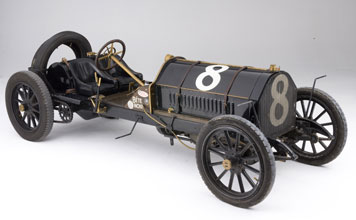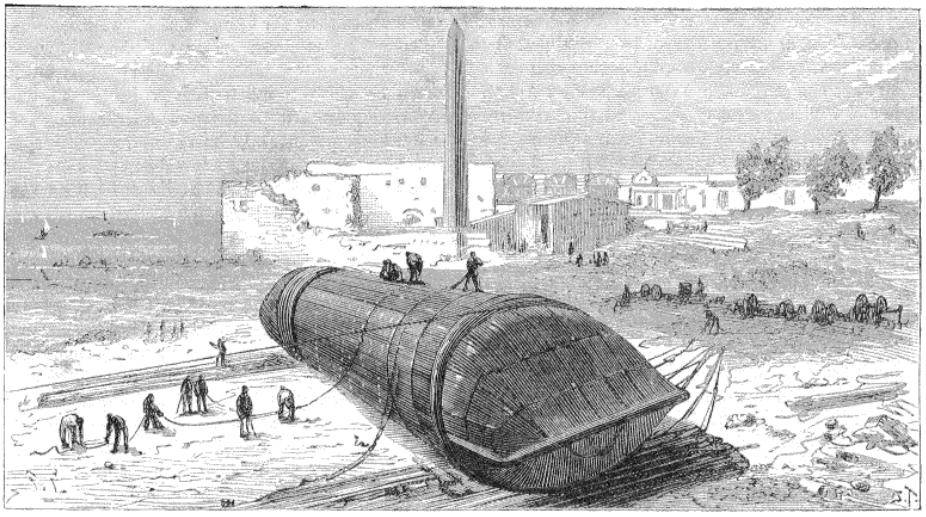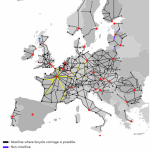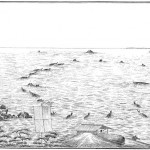“In Bolivia’s jungles and steep cliffs the Yungas people do not walk. They fly. On ropes. Like birds. Faster than astronauts. These ‘birds’ are known as cocaleros, or coca harvesters. They use ropes to swing across the narrow valleys, suspended from ancient rusting pulleys.” Watch the video. Jerry, thanks for the link. Previously: Aerial ropeways: automatic cargo transport for a bargain.
The Flying Men of Yungas Valley
What’s the Amish community’s stance on cars?
“To the extent that you are mobile in an automated or motorized way with something like a car or motorcycle or fast moving tractor, you’ve increased your radius of contact with other human beings, but at the same time you dilute the quality of contact within that radius.
So you can have more contact with a lot more people, but the quality of your relationships with those people, especially the people who are your immediate neighbors, is diluted. You don’t rely on them as much. It really drastically undermines the community.
The Beachy Amish — that’s a sect within the Amish — they decided to adopt cars. Then most of the young people left the group because they got exposed to the rest of the society and — poof! — they’re gone.”
Read more: Despite horses and buggies, Amish aren’t necessarily ‘low-tech’.
Oil Dependency & Alternative Fuels in 1909
“The fuel chiefly employed for motors (to the abundant supply of which the rapid rise of the automobile industry may be said to be largely due) is petrol. The motor industry, which is fast becoming one of the world’s greatest industries, is thus dependent upon the supply of a fuel which to all appearance must, according to the present trend of progress, fail in the near future to be equal to the demand. The Motor Union of Great Britain and Ireland became somewhat alarmed at the serious rise in the price of petrol, and in September 1906 it was suggested that a special Committee should be appointed to fully discuss this important subject.”
 “In July 1907 the official report of the Committee was issued, and through the courtesy of the secretary of the Motor Union the following extracts are taken: The Committee have carefully considered the various substitutes for petrol which have been brought before them, and have unanimously arrived at the conclusion that the main efforts of the Motor Union should be in the direction of encouraging in every way the use and development of a substance, such as alcohol, produced from vegetation.”
“In July 1907 the official report of the Committee was issued, and through the courtesy of the secretary of the Motor Union the following extracts are taken: The Committee have carefully considered the various substitutes for petrol which have been brought before them, and have unanimously arrived at the conclusion that the main efforts of the Motor Union should be in the direction of encouraging in every way the use and development of a substance, such as alcohol, produced from vegetation.”
“Alcohol offers a complete and satisfactory substitute for petrol so far as its properties are concerned, and hence probably the most important recommendation of the Committee is that connected with the production on a large scale of alcohol for the purposes of a fuel. It may be noted that the argument added to all others, but which to many in this country would probably appear the most important of all, is the fact that it would form a home industry, especially if produced from some substance, such as peat, potatoes, or beet, which would place the country in an independent position with regard to foreign supplies, a consideration which, it should be noted, is leading the Governments of France and Germany, particularly the latter, to give every encouragement to the use of alcohol as a fuel.”
Quoted from “Commercial peat: its uses and possibilities“, Frederick T. Gissing, 1909. Picture: the 1909 Alco Six Race Car.
How to Ship an Obelisk
In the 19th century Egyptian rulers gifted several large 1500BC obelisks to Paris, London and New York, all of which are still standing today. We already know how these things were erected, but how did they get there? The images above and below (from a 1878 article in the French magazine “La Nature”) show the vessel used for the transportation of the fragile 250 tonne heavy granite stone which is now in London.
A special vessel (the “Cleopatra”), was constructed around the obelisk, rolled into the sea, and then towed across the Mediterranean and the Atlantic to England. It sank on the way, but miraculously drifted to shore and was saved. The barge consisted of a steel cylinder enveloped in wood. The Americans, the French, and (much earlier) the Romans used different methods.
Disneyland’s Magic Highway USA (1958)
“As in the past, the highway will continue to play a vital role in the progress of civilization. It will be our magic carpet, to new hopes, new dreams, and a better way of life for the future.”
Watch the movie. Previously: Magic Motorways (1939) / London Traffic Improvements (1938) / Roadtown (1910).
Metropolis II by Chris Burden
“The California artist Chris Burden may be in his 60s, but he is still playing with toys. The thing is, the older he gets the more outrageously complicated the toys become. ‘Metropolis II’ includes 1,200 custom-designed cars and 18 lanes.”
Cars as they should be: toys. Metropolis II by Chris Burden.





